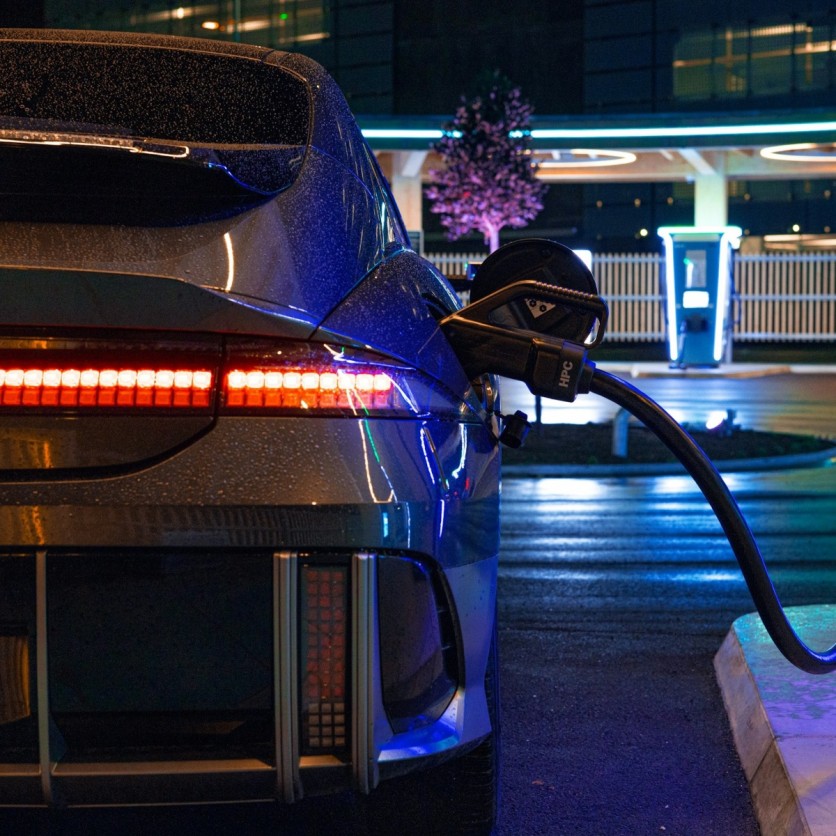
When it comes to saving our money and saving our planet, the first dual-solution innovation that comes to mind is transportation—we spend a lot of our money on fuel to transport us to work, school, and leisure activities, and our entire network of goods and services is reliant upon ready-to-go, easy to access transport such as cars, vans, or trucks.
With more cars on the road and prices for fuel climbing by the day, there is a real need for fuel-efficient transport and ideally low or zero-emission transport at that. Though car makers have made groundbreaking discoveries in fuel efficiency and reducing emissions, there are still even more technologies in the pipeline to help achieve the best of both environmentally friendly worlds. So what are these new fuel-efficient transport options, and are they available now? What's to come in the near future—and beyond?
Fuel-Efficient Ice Vehicles
Strides in making Internal Combustion Engine (ICE) vehicles more fuel efficient have come into play during 2024, with many smaller cars and even SUVs breaking the 5.0L/100km barrier despite being fully dependent on fossil fuels. The Suzuki Swift, Audi A3, Volkswagen Caddy, Toyota Yaris, and Mazda 2 all sip fuel below the five-litre mark. The most fuel-efficient vehicles are, of course, regular hybrid vehicles, which use a dual electric and petrol/diesel motor, switching from one to the other to maximise range and efficiency.
Electric Vehicles
Electric vehicles, or EVs, instead of being powered by a battery or plug-in hybrid configuration, dispense with fossil fuels. A plug-in hybrid (PHEV) is similar to a hybrid, except its electric motor can be plugged in to charge instead of being completely reliant on the petrol engine and regenerative braking to charge the battery. Of course, having an ICE engine alongside a battery means higher maintenance costs and limited model choice and availability compared with ICE or battery EVs (BEVs).
BEVs are arguably the next phase in transport, being completely powered by a battery powertrain, which means there are no emissions when driving. Though BEVs are still somewhat pricier than their ICE counterparts, BEVs tout zero emissions, lower fuel (electricity) costs per kilometre, cheaper maintenance costs, and longer ranges (400km+) before requiring a full charge. BEVs are becoming more popular, too. According to research by finance brokerage Savvy, 9.97 million BEVs were sold worldwide in 2023, with two million in China and one million in the United States.
A survey by Savvy also revealed that 41% of Australians are intending to buy an EV in the future (2023) with 10% saying they will buy one within the next twelve months.
EVs in the future may also have innovations such as field-replaceable batteries—i.e., where a low-charge battery is swapped out at a station for a fully charged one, eliminating waiting times—semi-automated driving or even fully automated driving, far longer ranges (1000km+) as well as putting downward pressure on prices thanks to greater economies of scale.
Beyond 2024: Hydrogen Fuel Cells
The next stage of zero-emission transport is hydrogen fuel cell cars. These cars power themselves using hydrogen gas (H2)—though there is some debate about its "green" credentials, considering some hydrogen is extracted from gas or coal. Other methods are much more environmentally friendly, such as steam methane reformation (SMR), SMR with carbon capture, and electrolysis using electricity and water (which also depends on the fuel source of the electricity generated.)
Hydrogen fuel cell cars have many advantages even over current EVs. It touts zero emissions—in fact, all it leaves behind is water; it can refuel as quickly as an ICE vehicle; it doesn't require bulky or heavy batteries; it's a technology that has been in development since the 1990s and even prior; and it has potentially longer driving ranges than current battery tech allows. It could also potentially be used as aviation fuel, a major contributor to carbon emissions.
Hydrogen fuel cell technology is still in its very early infancy. In the United Kingdom, there are only 11 H2 stations open to the public as of 2022 in a nation of 67.6 million people.
No matter what the future holds, there seems to be limitless promise to fuel efficient and low emission transport technology!
ⓒ 2025 TECHTIMES.com All rights reserved. Do not reproduce without permission.





